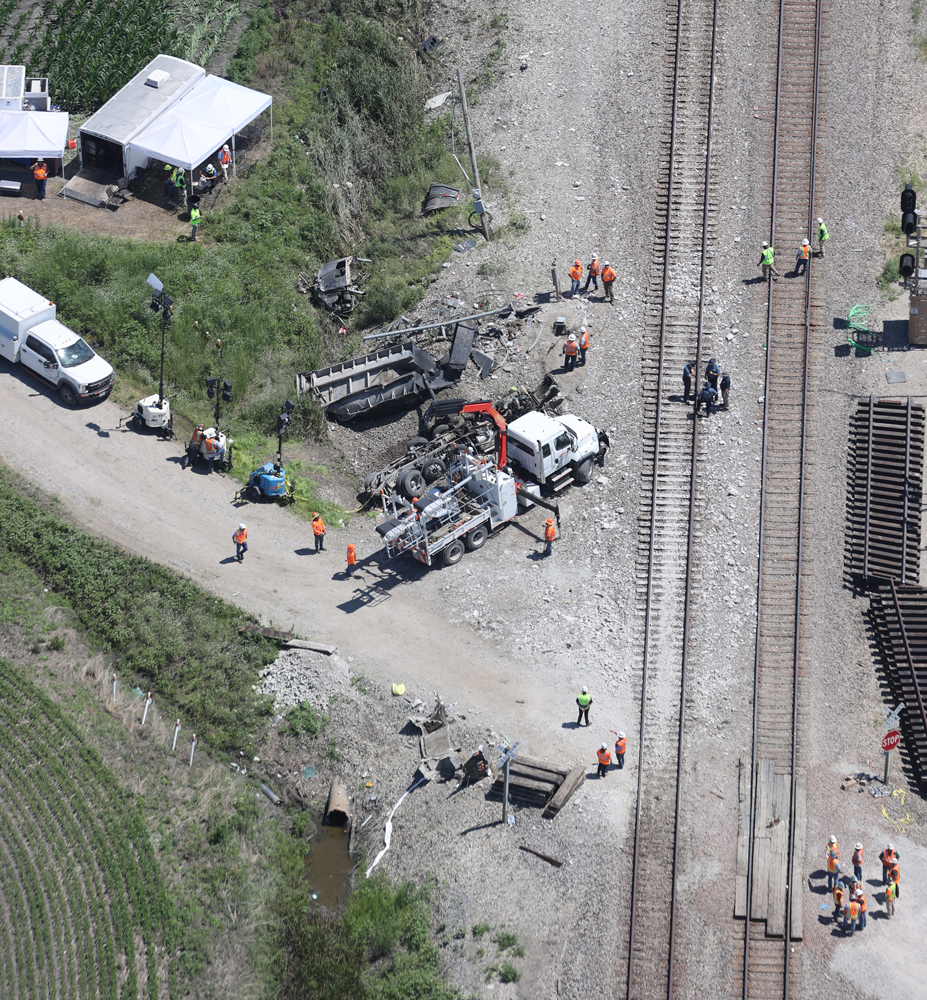
WASHINGTON — The design of the grade crossing, which made it difficult for a driver to see an approaching train, was a contributing factor in last year’s fatal collision and derailment involving Amtrak’s Southwest Chief in Mendon, Mo., the National Transportation Safety Board said in its final accident report released today (Aug. 2, 2023).
The probable cause in the June 27, 2022, accident was that the driver of the dump truck “proceeded for unknown reasons into the highway-railroad grade crossing without stopping despite the presence of a stop sign and approaching train.”
Three passengers and the driver of the truck were killed and 146 passengers and crew members were taken to hospitals for treatment of injuries. Amtrak and BNSF Railway estimated damage to track and equipment at about $4 million.
The grade crossing, which did not have lights or crossing gates, included a 10.8% grade —13 times the maximum grade recommended by the American Association of State Highway and Transportation Officials. The NTSB report says this would make it difficult for the truck to accelerate through the crossing if it came to a complete stop, as required by Missouri law. A driver of a similar truck told investigators he usually did not stop at the crossing because the steep grade made it difficult to start again.
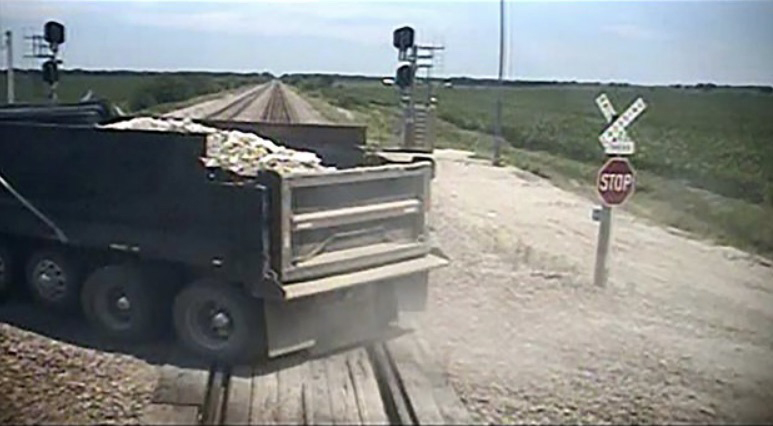
The 45-degree angle of the intersection of road and railway was also 30 degrees sharper than the lower range of the limit recommended by the AASHTO.
“The safest rail grade crossing is no rail grade crossing,” NTSB Chair Jennifer Homendy said in a press release accompanying release of the final report. “But at the very least, every road-rail intersection should have an adequate design to ensure proper visibility so drivers can see oncoming trains. Communities across the country deserve safer crossings so these types of accidents don’t happen again.”
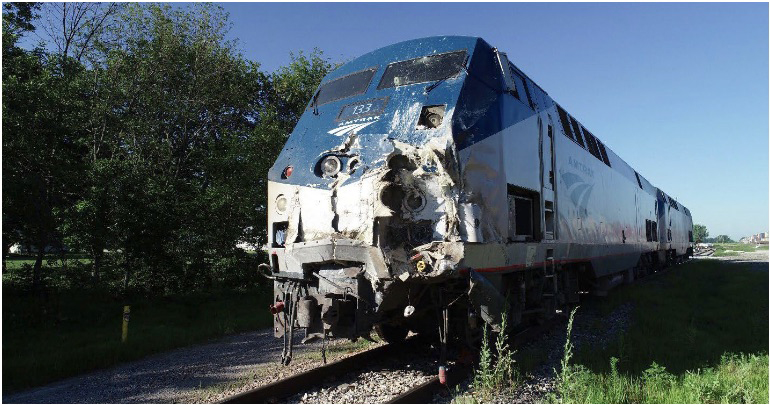
The train was going 87 mph when it struck the truck, derailing both locomotives and all eight cars, seven of which overturned. The front of the lead locomotive ended up some 1,286 feet east of the crossing.
Investigators determined that two of the passengers who died were in the vestibule of the train’s fifth car; the location of the third passenger who was killed could not be determined, since that passenger had been taken to a hospital for treatment. The NTSB said there were similarities between damage, injuries, and fatalities in this accident and the September 2021 fatal derailment of the Empire Builder near Joplin, Mont. [see “NTSB says track conditions caused …,” Trains News Wire, July 27, 2023]. It therefore reiterated recommendations made following that accident, and in prior incidents, calling for development of performance standards to ensure windows stay in place during accidents, and to consider methods for mitigating passenger injuries such as seatbelts and securing of objects that can become projectiles.
The complete accident report is available here.
The Missouri accident spawned numerous lawsuits, many of which have been on hold pending conclusion of the NTSB investigation. It has also led Missouri to fund more grade-crossing improvements, a program scheduled to be announced on Thursday [see “Missouri governor set to approve funding …,” News Wire, Aug. 1, 2023].
Amtrak said in a statement today that it “appreciates the opportunity to participate in the investigation. Amtrak will continue to work with all stakeholders to improve rail safety for the traveling public.
“By making improvements on routes used by Amtrak a high priority, the State of Missouri is making a commitment to grade crossing safety that is a model for other states.”






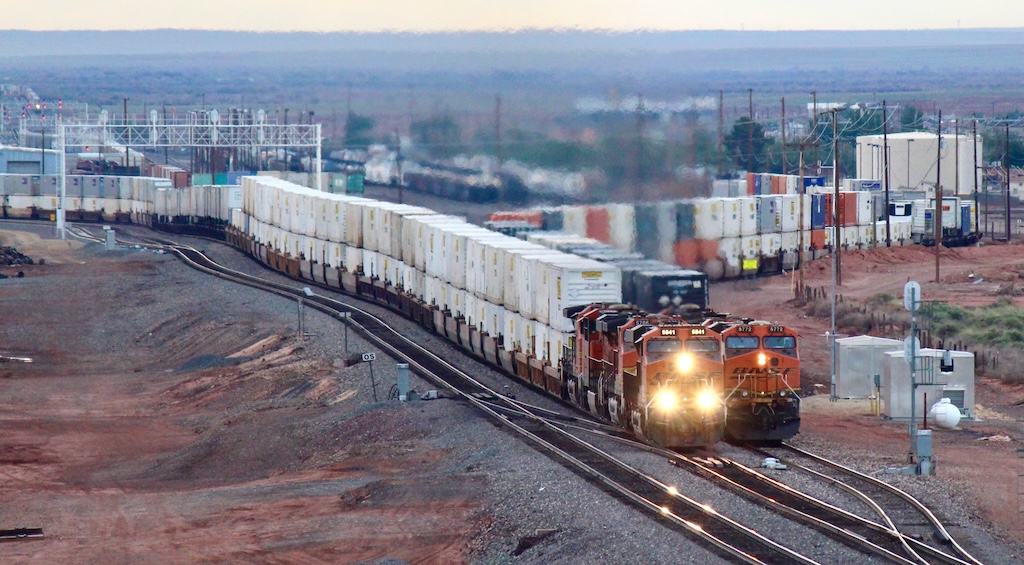
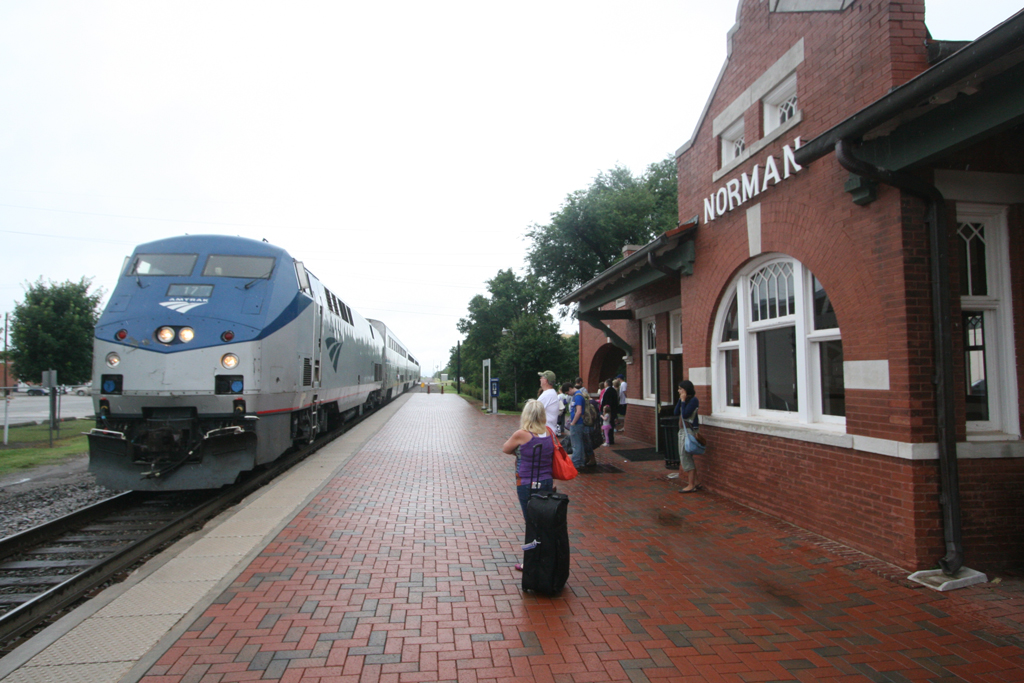
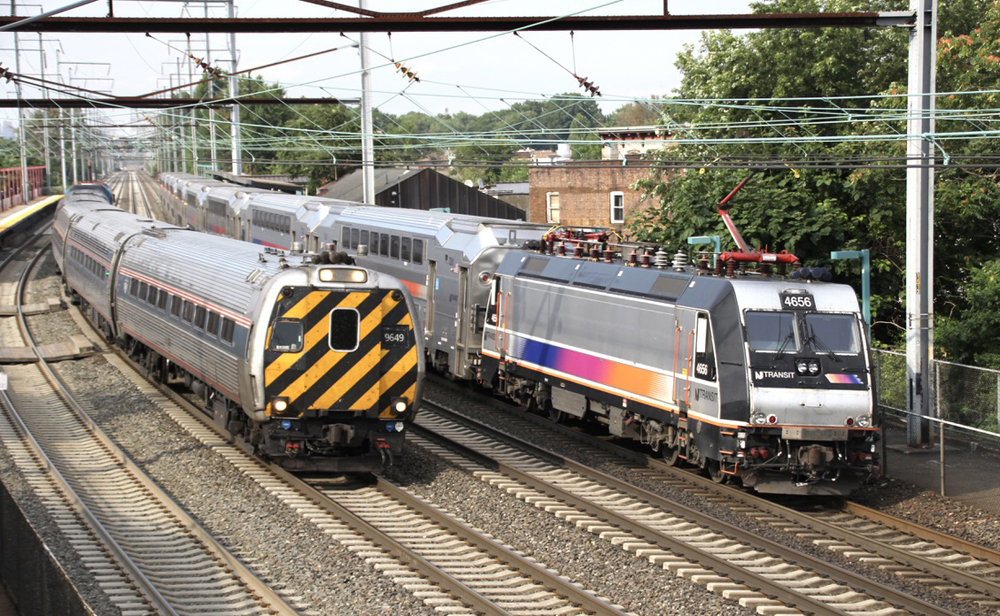





They’ll spend millions of $$ for a dangerous road intersection but RR crossings?…Not! To most Americans the response would be “Do they still have trains?”
Missouri governor did sign Bill 4 allocating $50 million for rail/highway safety crossing upgrades across the state.
Just wondering what the daily traffic count is at this crossing and how many years it has it been in existence.
Very busy. It’s on BNSF transcon. Railcam at LAP, east of there, advertises 60 trains per day. Grade crossing is likely very old, dating back to ATSF days, crossing there is likely 100 years or more old but has probably changed a bit in the intervening years.
Likely also that truck driver didn’t realize it was Amtrak until it was too late. Freight track speed through there is 70 for stacks and less for others, but Amtrak track speed is 90. That can make a big difference.
People living in the area said they’d complained about the crossing for years. There’s only a stop sign and a railroad crossing sign, no crossing arms, warning lights or bells. Residents said it was steep and difficult to see if a train was coming until it was too late.
Dr. Güntürk Üstün
My bet is he saw the train and thought he could beat it and ignored the stop sign as it is a tough crossing to handle with a full load on his truck.
I can somewhat agree Daryl, or a rolling stop, train travelling 87 mph is 1276 feet in ten seconds, poor judgment, steep incline…..I can make it, even if he stopped.
I think the bigger issue is there are design criteria in place for crossings and this one far exceeded those add in possible or probable driver error and an accident happened that was preventable.
Angular rail crossings like angular road crossings without some form of traffic control are so dangerous.
Crossbucks and stop signs just don’t cut it, either straighten them out or install signals.
I guess everyone assumed someone else was going to fix this crossing.
Just as there are requirements for which lines require PTC, there ought to be requirements for which lines must have all crossings signalized and with gates.
This is 2023. We shouldn’t have this.